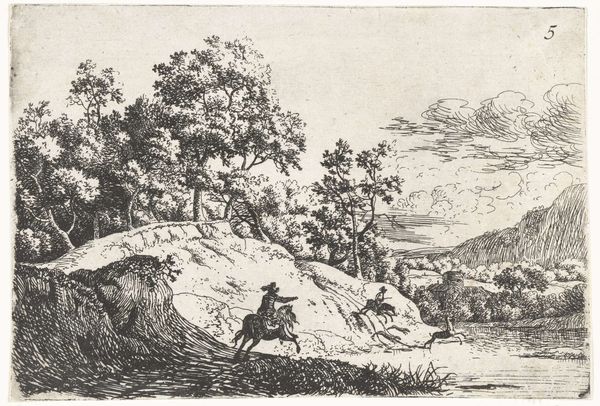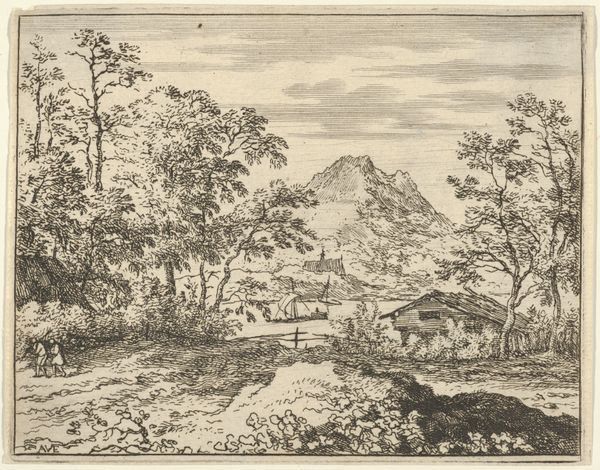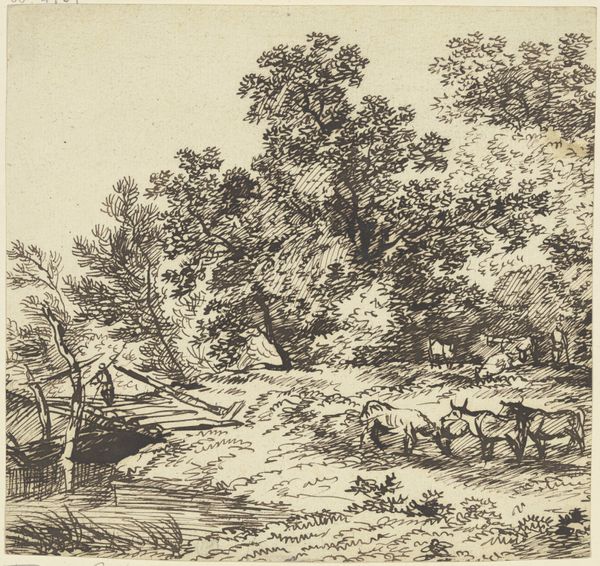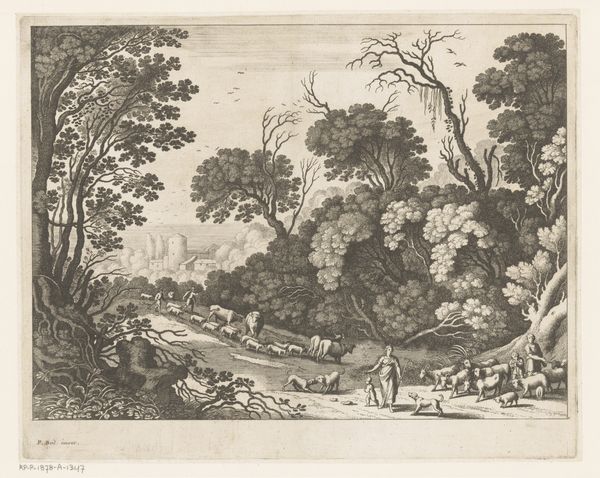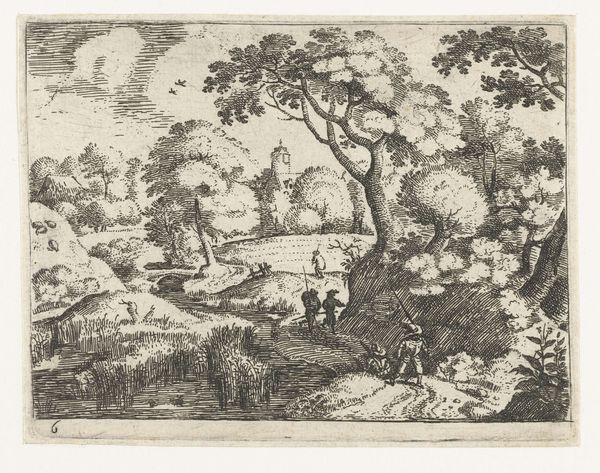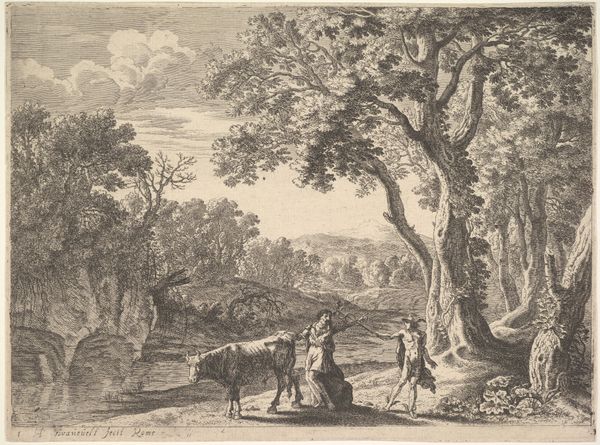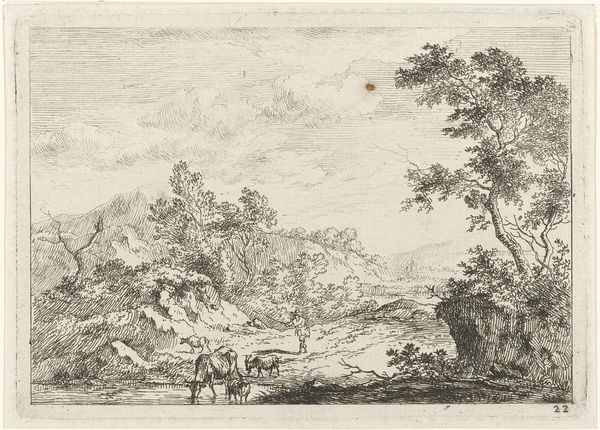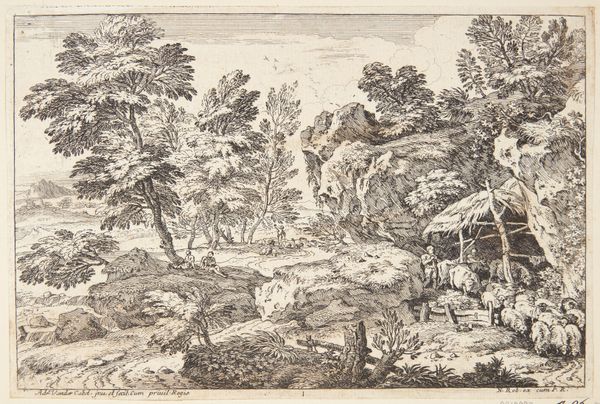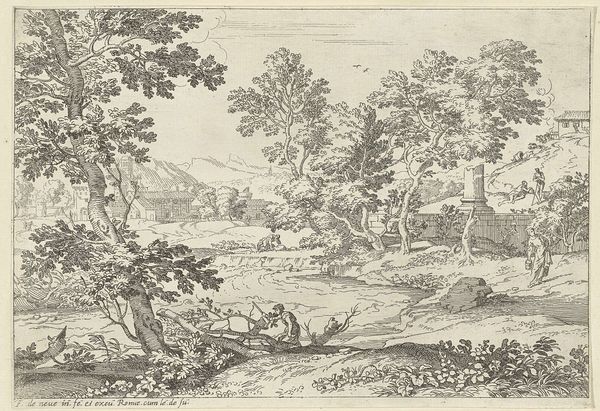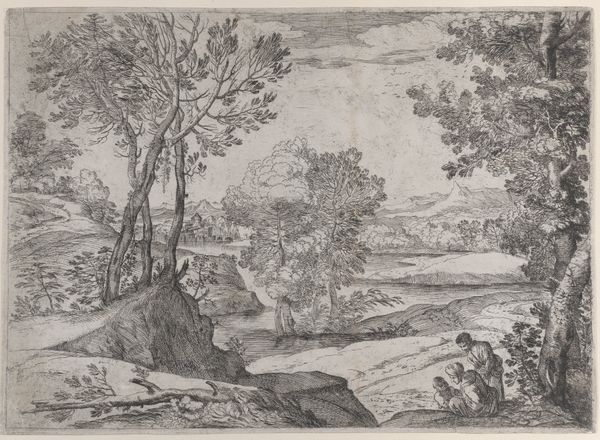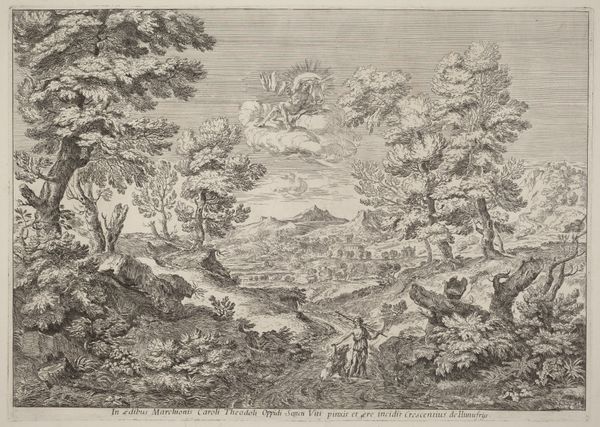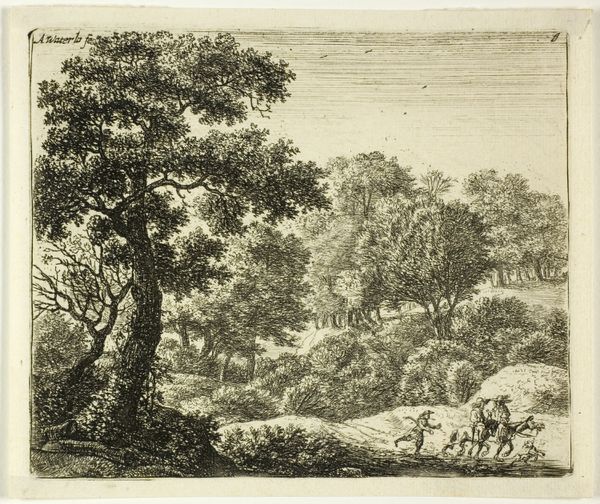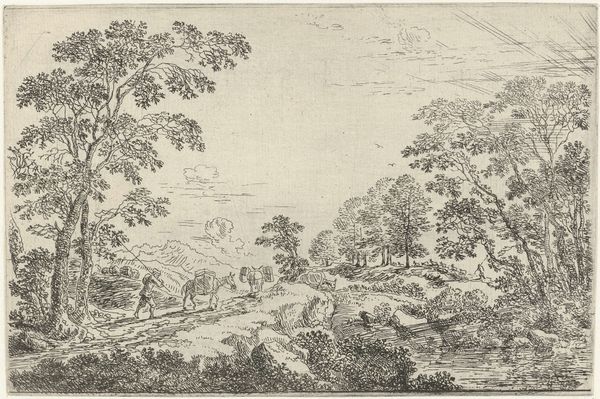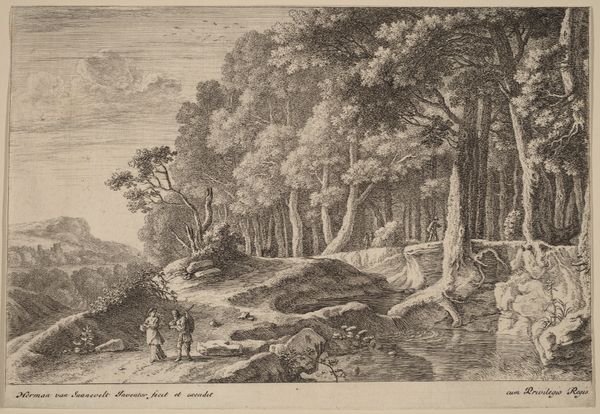
drawing, ink, engraving
#
drawing
#
neoclacissism
#
landscape
#
ink
#
genre-painting
#
engraving
Dimensions: height 86 mm, width 116 mm
Copyright: Rijks Museum: Open Domain
Curator: This engraving, "Herder en schapen" – that’s “Shepherd and Sheep” – was created in 1774 by Simon Klapmuts. It embodies the Neoclassical art movement with a pastoral scene, executed in ink. What are your first thoughts? Editor: A peaceful melancholy pervades this landscape. The use of engraving provides sharp contrasts of light and shadow. Is this perhaps an idealized vision of rural life, ignoring the social realities of agrarian societies? Curator: It's interesting you say that, because Klapmuts, working within Neoclassical ideals, often evoked a romanticized vision of virtue connected to the land, even as urbanization began to challenge traditional hierarchies. The shepherd figure, although seemingly a genre subject, becomes an emblem, if not a parody, of the “natural man” so prized in contemporary social and philosophical debates. Editor: Exactly! And looking closer, we see not just an escape to nature, but a constructed image upholding certain ideologies. The detailed rendering of trees, the almost whimsical sheep – do they not reinforce a social order by aestheticizing labor? It masks perhaps the exploitation inherent in agrarian structure. Curator: Klapmuts, in portraying this calm pastoral setting, could inadvertently reveal anxieties around social change of the 18th Century. Note the lone rider on the horizon. This, in contrast to the intimate clustering of shepherd and flock, implies a more ordered social strata and emerging networks that extended well beyond this small space. It implies perhaps a critique, a warning. Editor: This piece sparks debate then: is it celebrating the common man, or reinforcing systems of control and class differences? Is there an undercurrent, perhaps, that suggests it serves a function to normalise existing power dynamics by obscuring lived experiences behind picturesque façades? Curator: I see it also reflecting an elite longing for simpler times while maintaining their distance, of course. Thank you for helping me to see it anew. Editor: The pleasure was all mine; such works demand we view art's political impact through the lens of representation.
Comments
No comments
Be the first to comment and join the conversation on the ultimate creative platform.
